Imagine trying to run a growing B2B business using only spreadsheets, duct-taped tools, and a CRM that barely speaks your language.
Sound familiar?
You’re not alone. At some point, every ambitious B2B team hits the wall where off-the-shelf software just doesn’t cut it anymore; and that’s where custom software development steps in like the hero your tech stack never knew it needed.
But let’s be real: “custom software development” sounds expensive, complicated, and like something only enterprise giants can pull off. Right?
The truth? It’s more accessible, scalable, and ROI-driven than most businesses realize, but only if you approach it the right way.
This is why more and more tech founders, CTOs, ops teams, and digital leads are choosing custom software development over rigid off-the-shelf tools that force them to adapt their processes instead of empowering them to innovate.
Whether you’re a founder juggling workflows with Zapier and prayer, or a product manager itching to build a platform that actually works the way your business does, this guide breaks down everything you need to know; in plain English and without the fluff.
We’ll walk you through:
- What custom B2B software development really is (and what it isn’t),
- When it makes sense to build a custom system,
- What are the steps of developing a custom B2B software from scratch,
- How to get from “idea” to “launched” without blowing your budget or your mind,
- Debunking some of the common myths and misconceptions,
- What are the real of benefits of developing a custom solution, and
- How to choose the ideal development partner for your specific business needs,
Without any further ado, let’s dive right in!
What Is Custom Software Development in the B2B Arena?
B2B custom software development is the process of building tailor-made digital solutions designed specifically to meet the internal needs, workflows, and goals of a business; rather than relying on generic, off-the-shelf software.
Imagine a New York-based mid-sized logistics company struggling to manage inventory, deliveries, and partner coordination across regions. They’ve tried three different SaaS tools but none of them integrate well, and employees are juggling spreadsheets and manual updates.
They can team up with a custom software development agency in New York, and develop a custom solution that has a centralized dashboard that tracks real-time shipments, syncs with vendors, automates client notifications, and connects directly to their internal ERP; all in one place, designed around their process.

Source: IOT Analytics
But Why Are B2B Brands Switching to Custom? Here’s why:
Off-the-shelf software:
- Tries to serve too many use cases at once
- Often forces businesses to adapt their processes to the tool
- Lacks integration with internal systems
- Can become more expensive over time as teams pay for features they don’t use
On the flip side, custom software is:
- Purpose-built for your internal operations
- Flexible enough to scale and evolve with your business
- Easier to integrate into your ecosystem
- A long-term asset you own and control
Think of it like a suit. Off-the-rack might fit okay, but custom tailoring gives you exactly what you need, where you need it, and nothing you don’t. The same logic applies to your software stack.
When Do You Need a Custom B2B Solution?
Custom B2B software development isn’t about reinventing the wheel. It’s about building the exact tool your team needs to move faster, work smarter, and scale with confidence.
Let’s get one thing clear: Not every business needs custom software on day one.
However, as your business grows, so will the complexities of your operations. The cracks in generic tools start to show. What once felt “good enough” begins to create friction, inefficiencies, and frustrating workarounds.
Custom software development is preferable when:
- You’re drowning in spreadsheets and manual workarounds — If your team is juggling five tabs, three tools, and a whole lot of copy-pasting just to complete a routine task; it’s a red flag. When your tools become the bottleneck, it’s time to upgrade. Custom software can automate repetitive workflows and connect the dots in one place. It can also reduce tool fatigue and let your team focus on impact, not admin.
- Off-the-shelf tools don’t integrate with your stack — Your CRM won’t talk to your billing system. Your inventory software doesn’t sync with your sales dashboard. If your tools are siloed, custom software can bridge the gaps with seamless integrations.
- You’re bending your business to fit the software — Are you adapting your process just to match a feature limitation? That’s backwards. Custom software lets you build around your workflows, not compromise them.
- You’re paying for bloated software you barely use — Why spend thousands annually on features you never touch? A tailored system gives you only what you need, with no unnecessary overhead.
- You’re handling complex logic or industry-specific needs — Whether it’s logistics automation, regulatory compliance, or niche reporting; your business isn’t one-size-fits-all. Your software shouldn’t be either.
If two or more of these signs are hitting a little too close to home, you’re not alone; and most importantly, you’re not stuck. The reality is, most high-performing B2B teams eventually outgrow their patchwork of tools.
But what about off-the-shelf solutions? Well, here’s a visual comparison highlighting custom software development vs off the shelf solutions so you can choose the ideal solution for your business.

Source: XB Software
Custom software isn’t just for tech giants anymore. It’s a strategic move for businesses that want systems built around how they actually work.
The good news? With the right partner and a smart roadmap, it’s more achievable than ever. Let’s now look at what that roadmap really involves.
Key Steps of Developing a Custom B2B Software from Scratch
Building custom software from the ground up might sound intimidating, but when broken into clear steps, it becomes a manageable, strategic process.
Whether you’re building a lightweight internal tool or a full-scale platform, here’s how a typical custom B2B software development journey unfolds:
Step 1: Discovery & Scoping
This is your foundation, meaning this is where you define the “What and Why” behind the project: What problem are you solving? Who are the users? What does success look like? and more.
The goal here is to understand the business problem, who the users are, and what the ideal solution looks like. It involves stakeholder interviews, workflow audits, user research, and competitive analysis. This is also where you uncover hidden requirements that might affect technical decisions later.
At this stage, you’ll map out workflows, identify pain points, and start translating business goals into functional KPIs for success. A product owner or business analyst often leads this process.
The primary outcome here is a requirements document or user story map that everyone agrees on before design or development starts.
Step 2: Planning & Scoping the MVP
Once the goals are clear, it’s time to decide what you’re actually building, and how much of it needs to be built now. This phase includes breaking features down into must-haves (MVP), nice-to-haves, and future phases.
Here, you’ll prioritize core features (MVP), define the scope, create technical documentation, choose the engagement model (in-house, outsourced, offshore, augmented, or hybrid) and align on timelines and budget. This is also when you choose your tech stack and team structure.
This step will give you a clear project roadmap, technical architecture overview, timeline, and cost estimates.
Step 3. UI/UX Design
This step brings your software to life visually, but it’s about much more than looks. Before a single line of code is written, designers create wireframes and prototypes to ensure the solution is intuitive, user-friendly, and aligned with your brand.
Good UX is especially important in B2B, where complex workflows need to be simple and efficient. In B2B software, even small UX decisions can dramatically affect productivity.
UX/UI design ensures the product is easy to use, logical to navigate, and tailored to how your users actually work. Expect to see wireframes, clickable prototypes, user flows, and design systems. Properly done, you can expect approved designs, clickable mockups, and a blueprint for developers to follow.
Step 4. Development (Frontend & Backend)
Now the real build begins. Here’s where ideas turn into working software. Developers begin building the product in agile sprints, with regular demos, testing, and iteration. Teams often work in 2–3 week cycles with frequent standups and feedback loops.
Front-end developers handle the interface that users see and interact with (buttons, forms, dashboards), while backend developers build the infrastructure, databases, logic, and integrations behind the scenes.
By the end of this stage, you’ll have functional modules built and delivered incrementally, ready for testing and review.

Source: WillDom
Step 5. Testing & QA
Before launch, every component must be thoroughly tested for bugs, performance, and security. To make sure your app doesn’t just work, but works well; QA engineers test everything for functionality, bugs, edge cases, performance, and security.
This includes manual and automated testing, unit tests, integration tests, User Acceptance Testing (UAT), and more. For B2B platforms, especially those with complex workflows, solid QA is crucial to avoid downtime or bad UX. The earlier testing is integrated into the process, the smoother your launch will be.
The focus of this step is to give you a bug-free, stable product that meets business and technical requirements.
Step 6. Deployment & Go-Live
Once the app is stable and approved, it’s deployed to your live production environment. This may include cloud hosting setup (like AWS or Azure), containerization, CI/CD pipelines, infrastructure tools (Docker or Kubernetes), and basic monitoring tools.
This phase also includes setting up monitoring, analytics, backups, and access controls. A good development partner ensures your infrastructure is scalable, secure, and easy to maintain. All of this will result in a live, secure, scalable app that’s ready for real users and real feedback.
Step 7. Post-Launch Support & Iteration
Your job isn’t done at launch, it’s just getting started. The first version is rarely the final version. Once real users get their hands on your product, you’ll gather feedback, fix issues, and release improvements.
After go-live, you’ll need to monitor user feedback, track performance, patch issues, and roll out new features. This is where a dedicated support plan and continuous delivery model keeps your software competitive, scalable, and aligned with business needs.
Whether it’s scaling up, adding new features, or optimizing UX; software is a living product, and continuous improvement is key. This will give you an evolving product with an active feedback loop and a roadmap for future growth.
Cost Factors & Budgeting Tips
One of the biggest questions businesses ask when exploring custom B2B software is: “How much does custom software development cost?”, and the most honest answer is: “It depends.”
But that doesn’t mean you can’t budget smartly. The cost of custom software development varies widely based on scope, complexity, region, and who you hire.
For instance, the cost to build custom SaaS for fintech startups will be significantly higher than developing simple eCommerce apps. A simple admin portal? Low effort. An enterprise-grade CRM integration for logistics with multi-user roles, entity recognition, live data sync, and AI recommendations? That’s a bulky build.
However, by understanding the key cost drivers and applying a few budgeting principles, you can avoid surprises and make confident decisions.

Source: Simform
Here are the key cost factors to consider when developing a custom B2B software:
- The more features, modules, or integrations you need, the higher the cost. Start with an MVP. Focus on solving one core problem well, then iterate.
- Not all features are created equal. A single “automate invoice approval” button could take days if it has multi-step workflows, user permissions, and external system integrations. Ask your development partner which features drive the most complexity and cost.
- Need to connect with ERPs, CRMs, payment processors, or legacy databases? Every integration adds time, risk, and testing overhead. Prioritize integrations that directly impact core operations or revenue.
- Hiring local senior developers costs more than working with nearshore or offshore teams. U.S. and Western Europe rates average $80–$150/hr, while Eastern Europe, LATAM, and Asia range from $25–$75/hr. Look for a hybrid model (onshore PM + offshore devs) to balance quality and cost.
- Beautiful, intuitive interfaces require design time, especially if you’re building dashboards, data visualizations, or customer-facing portals. Don’t skip UX as poor usability can kill even the most powerful tools.
- If you’re working in industries like healthcare, fintech, or legal; expect added costs for encryption, secure storage, audit trails, and compliance (e.g., HIPAA, GDPR, SOC 2). Ask your provider early about compliance experience and protocols.
So, how to budget your B2B software development project?
Here are a few pro tips to help you get the most out of your buck:
- Start small, scale smart: Build a lean MVP first. Focus on must-haves, not “nice-to-haves.”
- Document clearly: Vague requirements = scope creep = surprise bills.
- Choose long-term partners, not short-term freelancers: Cheaper isn’t always better if it means rewriting code later.
- Use pre-built tools: Don’t reinvent login, payments, or charts; use proven libraries.
- Plan for maintenance: 15–20% of your budget should be reserved for updates, fixes, and scaling post-launch.
Remember, the goal of developing custom software development solutions isn’t to build the cheapest software, it’s to build the right software, within a budget that supports quality, scalability, and long-term ROI.
Common Myths, Misconceptions, and Challenges
When people hear “custom software development,” it often triggers a mix of excitement; and a little hesitation. Custom software development seems like a big leap, and with that leap come plenty of myths and misconceptions that can scare businesses off before they even get started.
The idea of building a software that’ll evolve to your needs sounds powerful; but also expensive, complex, and maybe even a little risky. And that’s because there are a lot of half-truths and outdated assumptions floating around.
In reality, many of these fears are based on myths, or bad past experiences with the wrong partners.
The truth?
Modern custom B2B software is more accessible, agile, and ROI-friendly than most businesses realize.
That said, it’s not without its challenges. But when you know what to expect and what to avoid, you can navigate the process confidently, with fewer surprises.
Let’s clear the air and separate fact from fiction so you can move forward with confidence:
❌ Myth 1: Custom Software is Only for Large Enterprises
Here’s the reality: many startups and mid-sized B2B companies are building lean, modular custom platforms that solve exactly what they need; without the bloated features or pricing of enterprise tools. In fact, custom often becomes the smarter option for companies that don’t want to pay per user or deal with rigid SaaS pricing.
❌ Myth 2: It Takes Forever to Build
Nothing can be further from the truth. A well-scoped MVP can be delivered in as low as 8–12 weeks; especially with agile teams, modern frameworks, and evolved tech stacks.
However, some businesses think building an app is like flipping a switch. But it’s important to remember that development takes iteration, testing, and communication. The key isn’t how big your idea is, but how clearly it’s defined and prioritized. So, plan a buffer time, and embrace agile over “big-bang” launches.
❌ Myth 3: Custom Means Expensive
Yes, there’s an upfront investment. Custom software often gets a bad reputation for being pricey, but that’s only if you’re thinking short-term.
Irl, custom tools can save thousands in the long-term by automating processes, reducing SaaS costs, and giving you full control over your tech stack. Plus, you own the code and avoid vendor lock-in.
While the upfront investment is higher than paying a monthly SaaS fee, custom development starts to pay for itself over time, especially in B2B where operational inefficiencies cost far more than code.
You’re no longer paying per seat, dealing with license renewals, or stuck with features you never use. Plus, you’re not at the mercy of someone else’s pricing model; you own the platform, the data, and the roadmap.

Source: Narola Infotech
❌ Myth 4: We Have to Build Everything From Scratch
In reality, that’s not the case. Custom doesn’t mean coding every line manually or reinventing the wheel. In most cases, developers use modern frameworks, APIs, open-source libraries, cloud services, and pre-built components to accelerate the process.
You’re just assembling the right pieces in a way that fits your business perfectly. Think of it like assembling a meal with quality ingredients: you choose what to make from scratch, and what to get pre-cooked.
This hybrid approach saves time, lowers cost, and ensures your software is still tailored to your unique business needs, without rebuilding basic functionality from the ground up.
❌ Myth 5: Custom Software is Harder to Maintain
Not Really. Poorly written custom software? Sure, that’s a maintenance nightmare.
But well-architected, modular custom software? It’s often easier to maintain than boxed solutions, because your team controls the codebase, priorities, and release cycles.
With a good partner and clean codebase, maintenance becomes easier, because you’re not waiting on a third-party vendor’s roadmap or customer support to fix critical features.
If something breaks or needs to be improved, your team (or your dev partner) can jump in immediately. No support tickets, no workarounds.
So, choose a partner that builds with clean code, documentation, and maintainability in mind; not just delivery speed.
Real-World Benefits of Custom Software Development for Businesses
So, what are the benefits of custom software development in the B2B context?
Custom software isn’t just about getting a tool that “works”. It’s about getting a solution that moves your business forward, fits like a glove, and scales with you. The benefits go far beyond clean UI or cool features.
Here’s why custom software development is important, especially for B2B brands:
1. Tailored to Your Workflow, Not the Other Way Around
With custom software, you’re not forcing your team to adapt to someone else’s logic. Every feature, field, and function is built around how your business actually operates, which leads to faster onboarding, smoother processes, and less frustration across departments.
For instance, instead of using a generic CRM and patching it with plugins, you build a CRM that’s made for your specific sales pipeline and reporting needs.
2. Seamless System Integration and Scaling
Custom solutions connect smoothly with your internal tools, third-party services, and legacy systems. No clunky workarounds or awkward imports. Fewer silos = better visibility and smarter decision-making. This way, you get a central hub of operations instead of jumping between disconnected platforms.
In addition, off-the-shelf tools often hit a ceiling; in pricing, users, features, or flexibility. Custom software is built to grow with you. Add new features, expand infrastructure, or adapt to market shifts; all without being boxed in by someone else’s product roadmap.
With custom development, you’re not just building for today. You’re future-proofing your operations.
3. Competitive Edge to Stand Out in the Crowd
With a custom B2B development, your software becomes your secret weapon. You’re not using the same cookie-cutter tool your competitors rely on. Instead, you’re solving problems in a way that’s unique to your business. This gives you a genuine operational and customer experience advantage.
For instance, you can automate complex B2B pricing tiers or build an onboarding workflow that saves hours of client setup time.
4. Greater Data Ownership & Security
With off-the-shelf tools, your data lives on someone else’s servers, and with someone else’s rules. Custom software puts ownership and access back in your hands, with the ability to implement role-based controls, encryption, and compliance features that match your risk profile.
This is especially valuable in industries like healthcare, finance, logistics, and legal.

Source: SolGuruz
5. Long-Term Cost Efficiency
Last but not the least, while upfront costs can be higher, custom solutions often save money over time by eliminating license fees, avoiding productivity loss from poor fit tools, and reducing dependency on multiple platforms.
You pay once to build what you need. and stop bleeding money on bloated subscriptions and inefficiencies.
At the end of the day, custom B2B software is about control, clarity, and capability. It gives you the power to run your business your way: faster, smarter, and more confidently than ever before.
How to Choose the Right Development Partner
You’ve defined the idea, weighed the pros, and you’re ready to move forward with a custom B2B solution. Now comes the make-or-break decision: choosing the right development partner.
A great partner doesn’t just write clean code. They understand your business goals, communicate clearly, and act like a true extension of your team.
Here’s how to find one you can trust:
1. Evaluate Relevant Experience
Look for partners who have built similar B2B products or worked in your industry. Ask for case studies, demos, or references.
A team that understands your domain will save you time, avoid rookie mistakes, and offer smarter suggestions from day one. Ask them, “Have you built something like this before, and what did you learn from it?”
2. Assess Communication & Collaboration Style
Code is important, but communication is everything. Your partner should be responsive, transparent, and fluent in agile delivery. Weekly check-ins, real-time updates, and the ability to flag risks early can mean the difference between success and scope creep.
During early conversations, notice how fast they respond, how clearly they explain ideas, and if they ask thoughtful questions.
3. Understand Their Process
Do they offer a structured process: from discovery to deployment to post-launch support? Good partners will walk you through timelines, tools, QA protocols, and change management strategies.
You should know what to expect at every stage. Ask about sprint cycles, testing routines, and what happens if priorities shift mid-project.
4. Check Tech Stack Fit
Make sure they specialize in the technology that aligns with your goals. Whether it’s Python, React, Node, AWS, Angular, or something else. They should also have devs who understand integration, scalability, and performance tuning, not just front-end polish. Ask, “Why would you choose [X tech stack] for a solution like ours?”

Source: Wixstatic
5. Prioritize Trust, Not Just Cost
Cheaper isn’t always better, especially when long-term stability is at stake. The right partner will align on outcomes, not just hours billed. Look for transparency in pricing, scope, and deliverables. If something feels vague or rushed, dig deeper. So, choose a partner who treats your product like a shared mission, not just a simple transaction.
In short, choosing the right development partner is an investment in your product’s success. Take your time, ask the hard questions, and trust the team that listens well and delivers consistently.
Pro Tips on Developing Your Custom B2B Software from Scratch
Even with the best roadmap, building custom software comes with twists and turns. Whether you’re working with an internal team, external partner, or hybrid squad, these real-world tips will help you stay on budget, hit milestones, and build a product that actually works.
Let’s explore a few of those:
- Don’t start by listing what the software should do. Start by identifying what it should solve. The best products are born from real-world pain points, not guesswork.
- You don’t need to build a feature-rich platform on Day 1. Focus on the smallest version that delivers real value, and then iterate. Rule of thumb: If a feature isn’t mission-critical in the first 90 days, it can wait.
- Don’t rely on verbal instructions or assumptions. Use user stories, workflow diagrams, or even Loom videos to explain how things should work. The clearer your input, the smoother the build.
- Custom doesn’t mean coding everything from scratch. Leverage proven tools, APIs, and open-source frameworks to save time and reduce risk. Focus custom effort where it matters most: your unique processes and logic.
- Don’t wait until the end of QA. Build in testing checkpoints after every sprint. Early testing catches bugs faster and ensures you’re building the right thing, not just building fast.
- Make smart decisions that won’t box you in later. Use modular code, build APIs that can evolve, and plan for growth. Use cloud-native tools (AWS, GCP, Azure) and versioned APIs from the start.
- Keep product owners, ops, and even sales in the loop. Their feedback will make the tool more usable, which means higher adoption and faster ROI after launch.
- You can’t improve what you can’t measure. Integrate tracking tools (like Mixpanel, Amplitude, or GA4) early so you can monitor feature usage, drop-off points, and real ROI.
- Especially in B2B, your clients care about data handling, uptime, and trust. Implement basic security practices (SSL, MFA, RBAC, encrypted data storage) and ensure compliance with relevant standards like GDPR, SOC 2, HIPAA, etc.
- Software is never really “done.” Business needs evolve, user feedback rolls in, and competitors shift the market. Plan for ongoing updates, feature releases, and technical debt cleanups. Allocate 15–25% of your annual dev budget for iteration and support, not just initial build.
To sum up, your software doesn’t have to be generic, and neither should your growth. Remember, custom B2B software is one of the most strategic assets your company can build, but only if it’s done with intent, structure, and a strong user focus.
How Inument Helps B2B Teams Build Smarter
At Inument, we know that a poor-fit partner (or freelancer roulette) can kill momentum in more ways you can think. That’s why we don’t just write code for the sake of it. We help growth-focused teams build fast, scale sustainably, and finally break free from the limitations of one-size-fits-all tools.
Whether you’re building from scratch, modernizing a legacy tool, or bridging process gaps with custom workflows, our approach is designed to give you speed without sacrificing quality, and flexibility without friction.
Inument specializes in aligning development with your business goals, solving real operational pain points, and helping you build what matters most. Our seasoned engineers, designers, and product managers integrate seamlessly with your existing team.

Source: Cubix
From technical architecture to UX design, we bring deep domain expertise and plug directly into your workflows. We build custom where it creates real value, and leverage proven tools, APIs, and frameworks to save time and cost.
The result? A smart, scalable solution that’s uniquely yours, without reinventing the wheel.
This is why B2B teams across the world, from funded SaaS startups to operationally complex enterprises, trust Inument to augment their teams or take full ownership of delivery: with quality, speed, and accountability baked in.
Wrapping Up: Make Your B2B Solution Work for You
The primary focus of developing a custom B2B software should be about building tools that reflect the way your business actually works. When off-the-shelf platforms fall short, a tailored B2B solution puts you back in control: of your workflows, your user experience, and your long-term growth.
From solving operational bottlenecks to delivering smarter customer experiences, custom B2B development is no longer a luxury. It’s a competitive necessity. And with the right development partner by your side, it’s more achievable than ever.
Ready to explore what a smarter, custom-built B2B solution could look like?
Let’s talk. Book a free discovery call or drop us a message. Inument believes that your software shouldn’t be generic. It should be a reflection of how you lead, operate, and grow.
Let’s build something that works for you, not against.

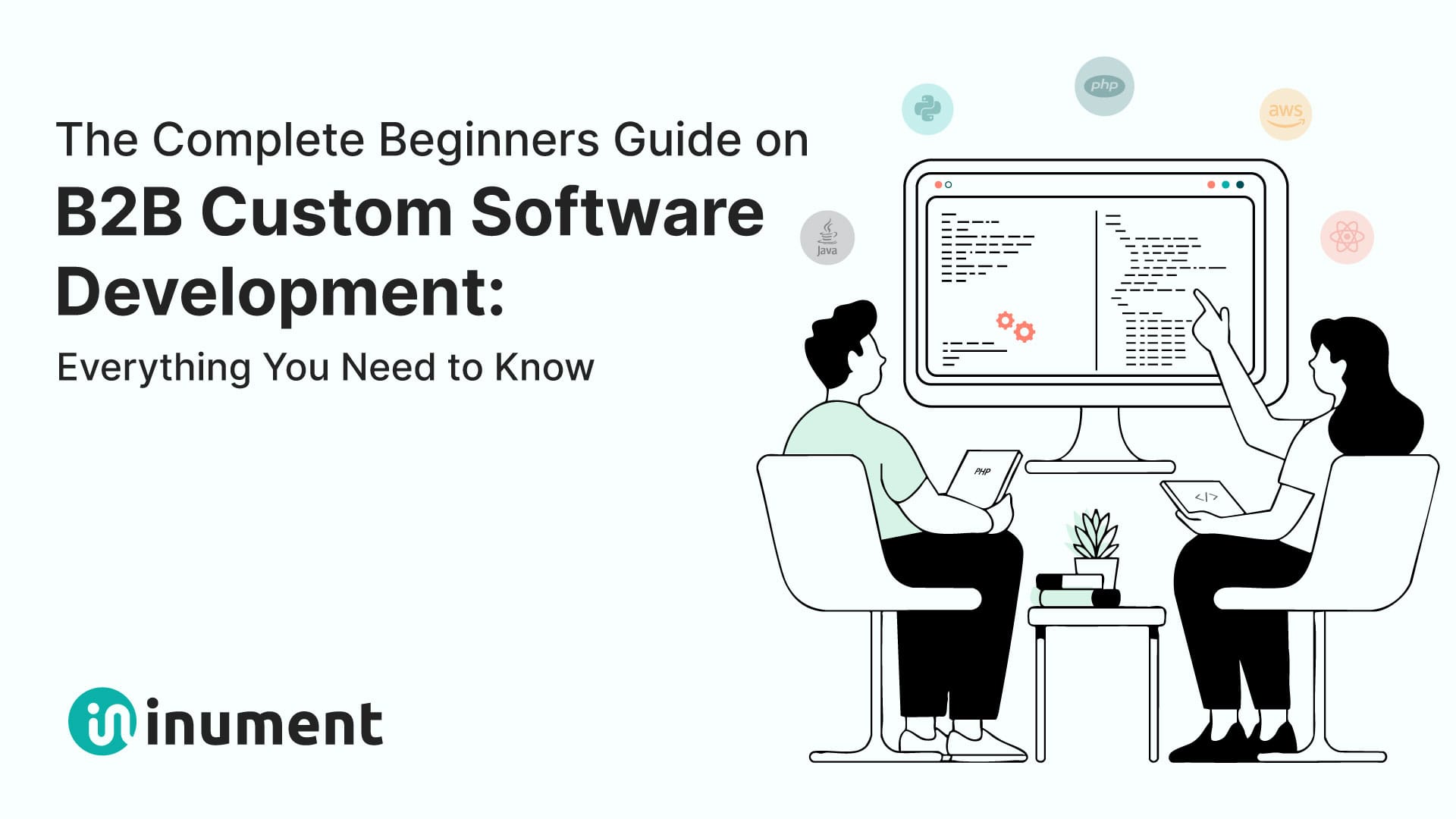
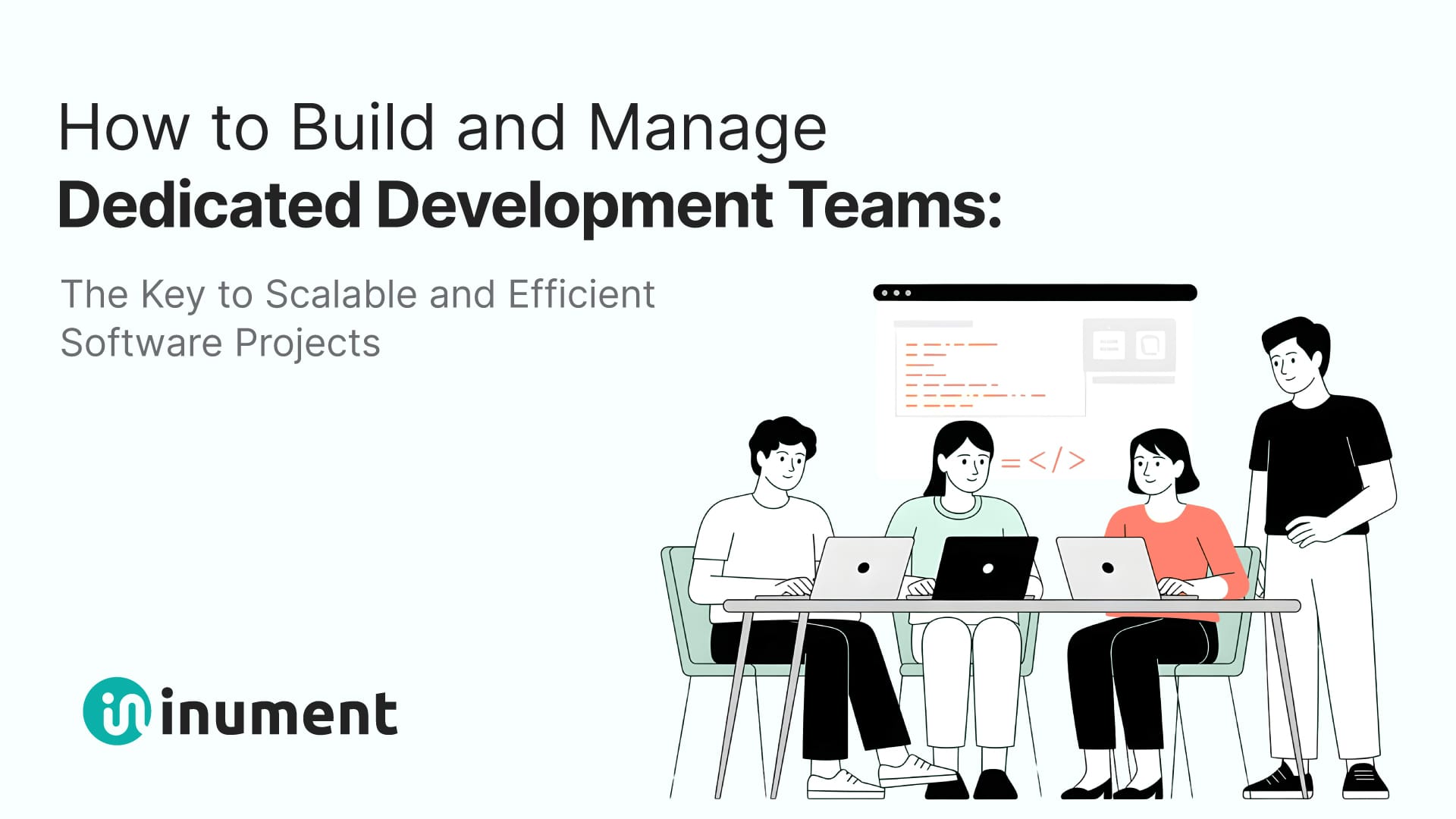
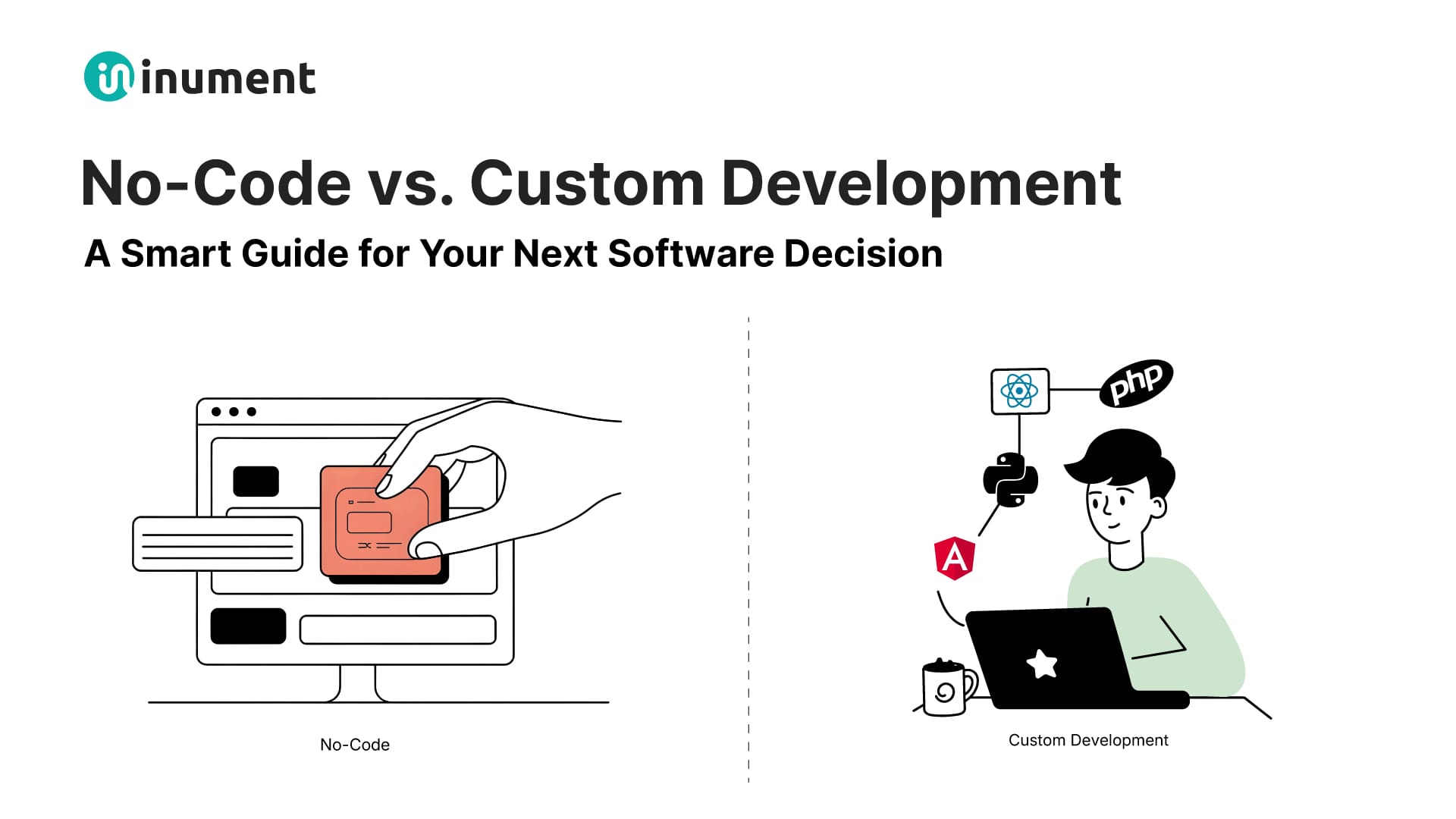
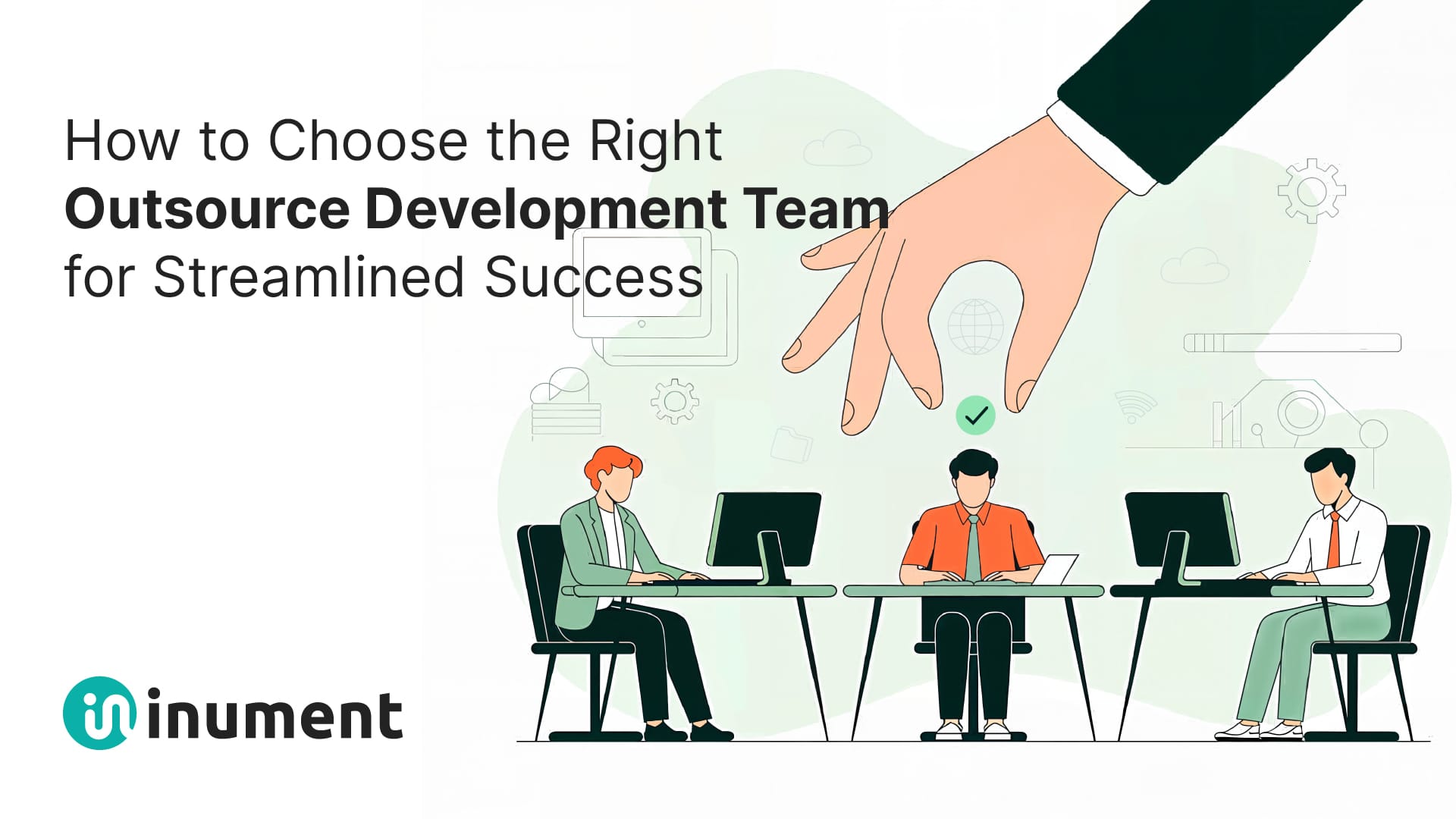
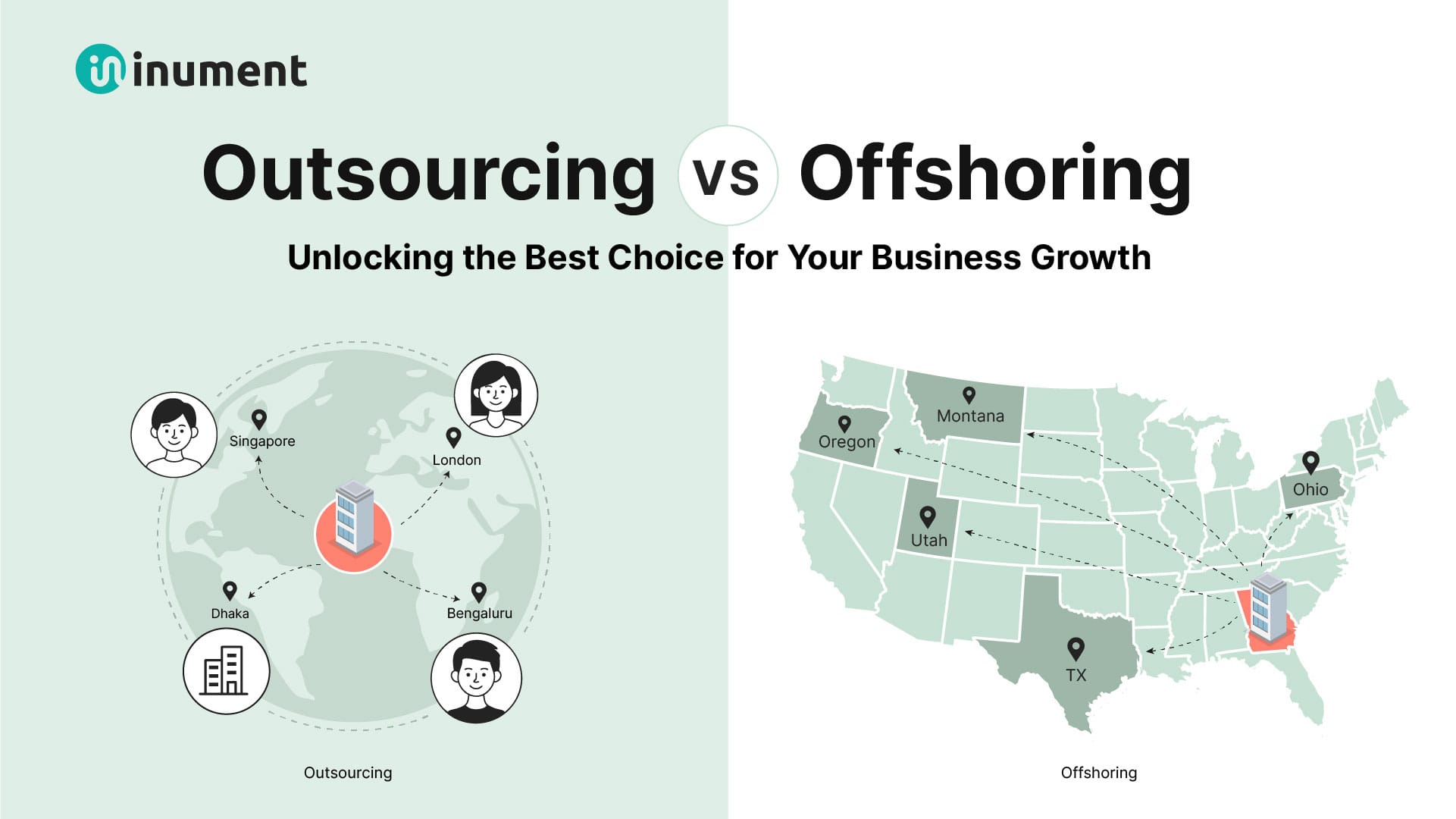

0 Comments